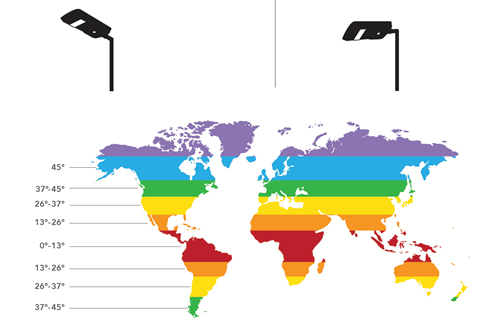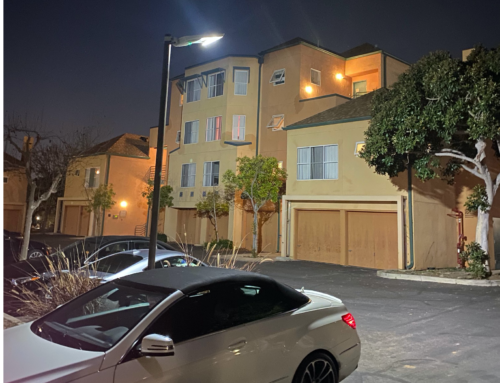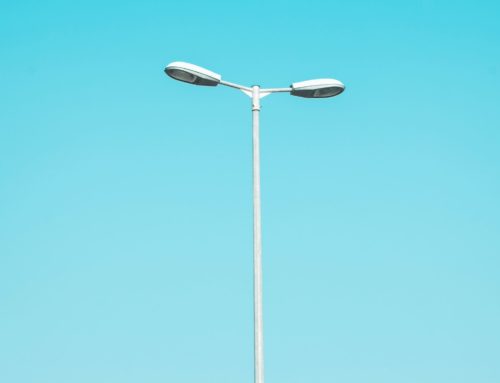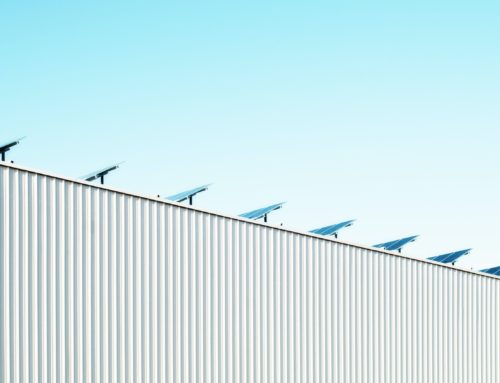As solar lighting manufacturers, we’ve learned what customers want and need to know about solar fixtures. We picked our top five findings about off-grid solar lights to share with you. Off-grid solar fixtures work independently of the power grid (aka line voltage) and are entirely dependent on solar power. Off-grid solar lighting is the solution for illuminating areas where it’s not possible or cost prohibitive to install wiring to line voltage. Here are our 5 top things to know about choosing and operating off-grid solar lights:
- Off-grid solar lights are the perfect solution for places that do not need lighting 24/7. Forest preserve park trails or office buildings are good candidates for the benefits of off-grid solar. Hospitals and other locations where night lighting is critical, are not suited for off-grid solar lighting. The amount of sunlight and air temperature in the installation location affects the operation of solar lighting. With complete dependence on solar power, off-grid solar fixtures cannot be expected to be illuminated all night, every night.
- The location of off-grid solar lighting must be in a predominantly sunny area – free of tree cover, building shadows or other interference that prevents the sun from reaching the solar panel. While this sounds obvious, scouting locations for off-grid solar lights requires some “what-if” scenarios. For instance, a building owner may be looking for lighting in early spring when the trees do not yet have their foliage. Additionally, the installer must consider how the arc of natural light changes from dawn to dusk and the implications for where to place the off-grid fixtures. Current and future construction projects near the solar lights’ location also have the potential to change access to the sun.
- Always angle the solar panel towards the predominant sun location in your area of the world. Refer to your location on the world diagram below to determine the recommended panel angle for solar light set-up. In the Northern Hemisphere, solar panels charge most optimally when installed facing south. Since the specific space will dictate the installation of the fixture and where light is needed, it’s not always possible to achieve a purely southern direction for the panel. In this case, angle the panel so that it gets maximum sun exposure. The fixtures should still operate well. Panels facing east or west will not get as much light as a south-facing panel, but will still collect good quality sunlight. Try to avoid facing the panel north if possible, to avoid the less-than-optimal charging situation. Only set up the solar panel flat to the sky, when your location is close to the equator.To maximize solar battery efficiency and hours of illumination, optimize the use of the off-grid solar fixture’s modes of operation. Most solar fixtures have several different operating modes. Review the instruction manual for your solar lights to understand how to leverage its different modes of operation. With most of our Solera Solar Lighting Off-Grid fixtures, you can adjust the mode on the unit or via a remote control included with the fixture. Examples of modes available include a “constant brightness mode” that keeps the fixture brightly illuminated all night (subject to the battery charge level), a “time schedule mode” where the fixture adjusts brightness up during night’s darkest hours and down as dawn approaches, and a “motion sensing mode” for activating the fixture to turn on / increase brightness when motion occurs near the fixture. The motion sensing mode preserves battery life best, but other factors affect the best mode to choose.

- To maximize solar battery efficiency and hours of illumination, optimize the use of the off-grid solar fixture’s modes of operation. Most solar fixtures have several different operating modes. Review the instruction manual for your solar lights to understand how to leverage its different modes of operation. With most of our Solera Solar Lighting Off-Grid fixtures, you can adjust the mode on the unit or via a remote control included with the fixture. Examples of modes available include a “constant brightness mode” that keeps the fixture brightly illuminated all night (subject to the battery charge level), a “time schedule mode” where the fixture adjusts brightness up during night’s darkest hours and down as dawn approaches, and a “motion sensing mode” for activating the fixture to turn on / increase brightness when motion occurs near the fixture. The motion sensing mode preserves battery life best, but other factors affect the best mode to choose.
- Weather is a critical factor affecting the battery’s ability to charge in order to illuminate off-grid solar lighting. While the latest technology has greatly improved the battery operation, freezing air temperatures still impede solar fixture batteries from charging well. Even with sunny conditions, freezing temperatures cause the electrons in the battery to move more slowly, and the battery stops charging to self-protect. However, if the battery already was charged before freezing temps, it can stay charged and operate the solar light in very low temperatures. Our Solera Solar Lighting Off-Grid operates in temperatures down to -4°F. Rain, snow and clouds also interfere with the battery’s ability to charge. Since just one full day of sun can translate into multiple nights of light, occasional clouds or storms may not interrupt your solar fixture’s service. However, a string of cloudy days can deplete the battery and lead to inability to illuminate. Always check the expected battery output for any solar fixtures being considered for purchase.
Take these 5 key things into consideration when choosing your off-grid solar lighting. Off-grid solar lighting solutions add safety and security to areas where line voltage is not available. Plus, these fixtures have the added benefit of being free to operate. Need help exploring your off-grid solar lighting options? Contact us today.






